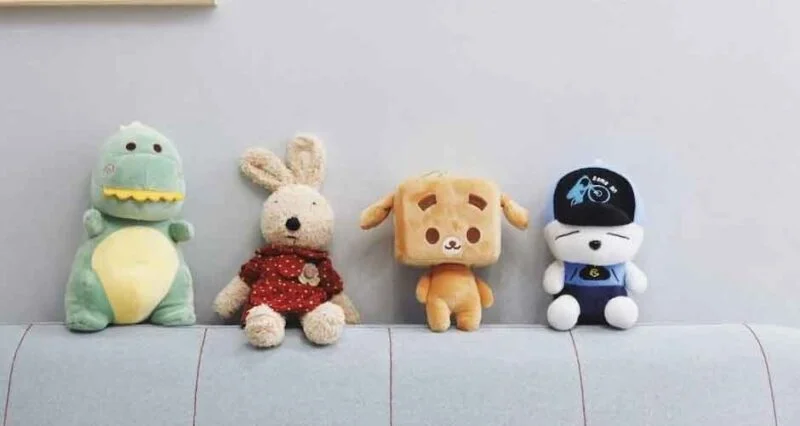
Childhood toys often hold sentimental value and can be surprisingly lucrative when sold. Many people seek to declutter, earn money, or simply pass their beloved items to new owners. Selling vintage toys requires a strategic approach to maximize profits and ensure a smooth transaction process. By following a step-by-step guide, sellers can navigate the complexities of the resale market with confidence. This guide will provide essential tips and tricks to effectively sell childhood toys to eager buyers.
Researching the Market
Understanding the market is crucial when selling vintage toys. Begin by identifying popular toys and their current demand. Research completed sales on platforms like eBay to gauge realistic prices. Check collector forums and social media groups for trends and insights from experienced resellers. Pay attention to factors like brand, rarity, and condition, which significantly impact value. Comprehensive market research helps set competitive prices, attracting serious buyers and maximizing profits. Utilize price guides and auction house results for additional data points. Joining online communities dedicated to vintage toys can offer valuable networking opportunities and firsthand advice. Accurate knowledge of market dynamics ensures better decision-making and effective sales strategies. Leveraging online resources provides valuable data for successful vintage toy sales.
Evaluating the Condition of Your Toys
Evaluating the condition of vintage toys is essential for accurate pricing. Start by inspecting for any visible damage, such as cracks, discoloration, or missing parts. Original packaging and instruction manuals significantly enhance a toy’s value. Clean toys carefully using appropriate methods to avoid further damage. Grading systems, like C-1 to C-10, help standardize condition assessments. Professional appraisals provide a precise evaluation and can increase buyer confidence. Detailed descriptions and high-quality photographs in listings accurately reflect a toy’s condition, attracting more serious buyers. Understanding condition nuances ensures fair pricing and helps avoid disputes. Accurate evaluations build a trustworthy reputation among buyers, enhancing overall sales success.
Choosing the Best Selling Platforms
Choosing the best selling platforms is vital for reaching the right buyers. Online marketplaces like eBay and Etsy are popular choices for vintage toy sales. Specialized auction sites and collector forums can also attract serious buyers. Social media platforms offer direct sales opportunities and allow sellers to engage with niche communities. If you are thinking of selling your toys, consider the audience and fees associated with each platform. Local options like flea markets and toy conventions provide in-person selling opportunities. Research platform reviews and success stories to make informed decisions. Utilizing multiple platforms increases exposure, enhancing the chances of a successful sale. Additionally, websites like Craigslist and Facebook Marketplace can be useful for local sales, avoiding shipping hassles. Understanding each platform’s strengths helps tailor the selling strategy, ensuring toys reach the right buyers at optimal prices.
Crafting Effective Listings
Crafting effective listings is essential for attracting buyers and ensuring quick sales. Start with a clear, detailed title that includes the toy’s name, brand, and key features. Write an engaging description highlighting the toy’s condition, rarity, and any unique aspects. High-quality photos from multiple angles provide transparency and build trust. Including keywords that potential buyers might search for improves visibility on the platform. Providing information about the toy’s history and any included accessories adds value. Accurate and honest listings prevent misunderstandings and negative feedback. Offering multiple shipping options and clear return policies can also enhance buyer confidence, leading to successful transactions.
Packaging and Shipping Tips
Proper packaging and shipping are crucial for maintaining toy condition and ensuring buyer satisfaction. Use sturdy boxes and bubble wrap to protect toys from damage. Seal packages securely with strong tape to prevent accidental openings during transit. Consider adding extra padding for delicate or valuable items. Clearly label packages with both the sender’s and recipient’s addresses to avoid delivery issues. Choose reliable shipping carriers and offer tracking options for peace of mind. Insuring valuable shipments provides additional protection against loss or damage. Providing estimated delivery times in listings helps manage buyer expectations. Efficient packaging and shipping practices enhance the overall selling experience.
Making the Most of Your Vintage Toy Sales
Successfully selling childhood toys involves research, evaluation, and strategic listing. Sellers can unlock the hidden value of vintage toys by following this guide. A thoughtful approach ensures toys find appreciative new homes while maximizing profits. Proper packaging and shipping complete the process, leaving both buyer and seller satisfied. Embrace these steps to achieve rewarding vintage toy sales.

